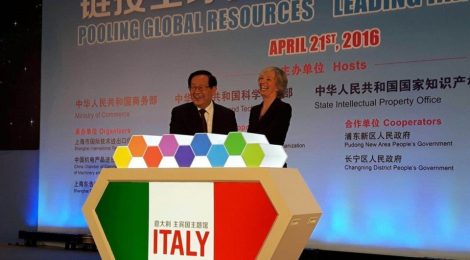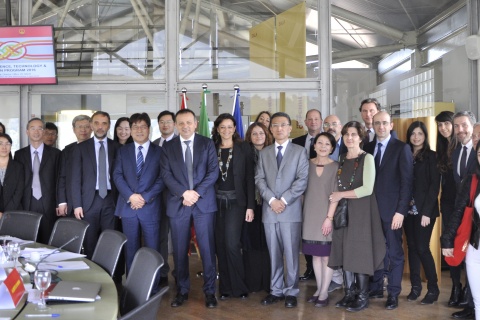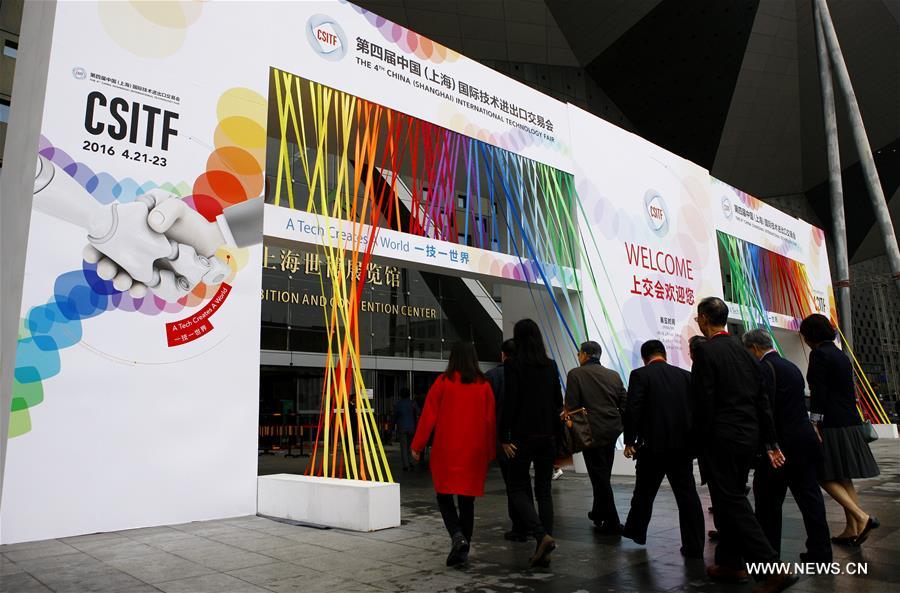
Made by Italy: its value in China and the rest of the world
On April 21, Italy was a guest of honour at the China Shanghai International Technology Fair. As the Italian Minister of Education, University and Research (MIUR), Stefania Giannini, underlined during the opening ceremony, the place reserved to Italy brings along an important message, confirmed by the Chinese Minster for Science and Technology (MOST), Wan Gang, and the Mayor of Shanghai, Yang Xiong, who both held long conversation with the Italian delegation of nearly 100 participants, led by Italian national Foreign Trade Institute and MIUR. Numerous were the Italian booths focused on smart cities, as almost every university and research entity operating in China took part in the fair, together with a significant number of industrial stakeholders, including Finmeccanica, Danieli, CHN, Bracco and Coop.
Chinese authorities never direct their attention randomly, as the Italian Consul in Shanghai, Stefano Beltrame, highlighted. The presence of Italy in an event of key importance to the city administration did not pass unnoticed and gained our country that relational capital that in Chinese is called guanxi, which is extremely valuable in China.
 A few considerations. Firstly, the continuity that have characterised the institutional relations between China and Italy on matter of technology and innovation is not to be underestimated. On the Chinese side, Minister Wan Gang has been strongly committed to strengthening the bilateral dialogue since his appointment in 2007. Meanwhile, the five different Ministers who have covered the respective position in Italy have proved able to maintain the interest of their counterpart, thanks also to the Diplomatic Councillor, Gianluigi Benedetti, and the efforts of Città della Scienza in developing the China-Italy Innovation Forum.
A few considerations. Firstly, the continuity that have characterised the institutional relations between China and Italy on matter of technology and innovation is not to be underestimated. On the Chinese side, Minister Wan Gang has been strongly committed to strengthening the bilateral dialogue since his appointment in 2007. Meanwhile, the five different Ministers who have covered the respective position in Italy have proved able to maintain the interest of their counterpart, thanks also to the Diplomatic Councillor, Gianluigi Benedetti, and the efforts of Città della Scienza in developing the China-Italy Innovation Forum.
Secondly, patience is needed to do business in China. Although Chinese welcome is generally warm and immediate, outcomes can be appreciated just in the long run. Italian entrepreneurs taking a step towards this country need to be well prepared, organised and ready to adapt to a different strategic approach.
Finally, presence is key. Michal Ron, in charge of international investments for SACE SpA / SIMEST SpA, made the distinction between Made in Italy and Made by Italy, essential to become protagonists in the creation of new markets. Italy possesses an advantage in product selling in some sectors, but it often faces big problems when it comes to new markets.
 Vincenzo De Luca (interviewed by our Director here), former Consul in Shanghai and currently Director-General for the Promotion of the Italian Economic System of the Minister of Foreign Affairs, said: “We need to export from Italy only what cannot be produced in China, and we need to produce in China what the Chinese market needs.” This is what we call the “Made by Italy” model: going beyond economic policies solely focused on products’ promotion, and giving support to those enterprises, public and private institutions which are trying to establish an solid international presence.
Vincenzo De Luca (interviewed by our Director here), former Consul in Shanghai and currently Director-General for the Promotion of the Italian Economic System of the Minister of Foreign Affairs, said: “We need to export from Italy only what cannot be produced in China, and we need to produce in China what the Chinese market needs.” This is what we call the “Made by Italy” model: going beyond economic policies solely focused on products’ promotion, and giving support to those enterprises, public and private institutions which are trying to establish an solid international presence.
Those who took on this approach are collecting positive results. They are growing in double digits and now reinvesting on the Chinese market, which they preside. Such development path did not result in a drop in occupation in Italy, on the contrary, successful investments in China brought back home enlarged occupational capability and productivity. This represents a challenge especially for our SMEs, which often lacks managerial capabilities and resources to tackle faraway markets.
Concretely, Made by Italy means not to leave our products, entrepreneurs, researchers and students on their own around the world. We need to build a solid presence, not only in the industrial sector, but also with regards to universities and research centres. A lesson can be drawn from the successful experience on the Sino-Italian Campus opened in Tongji University in Shanghai, which is a reference point for numerous Italian university which have joined the consortium through the years.
The model of Made by Italy could be applied also in other countries such as Iran, or in Latin America and in Africa. Combining economic and scientific diplomacy, Italy can aim at creating new markets there.
Article by Prof Alberto Di Minin
Adapted from the original Italian version published on 8 May 2016 by Il Sole 24 Ore, and accessible here.




